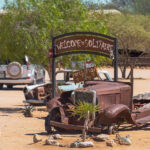Louis Botha and the wild horses
Louis Botha and the wild horses
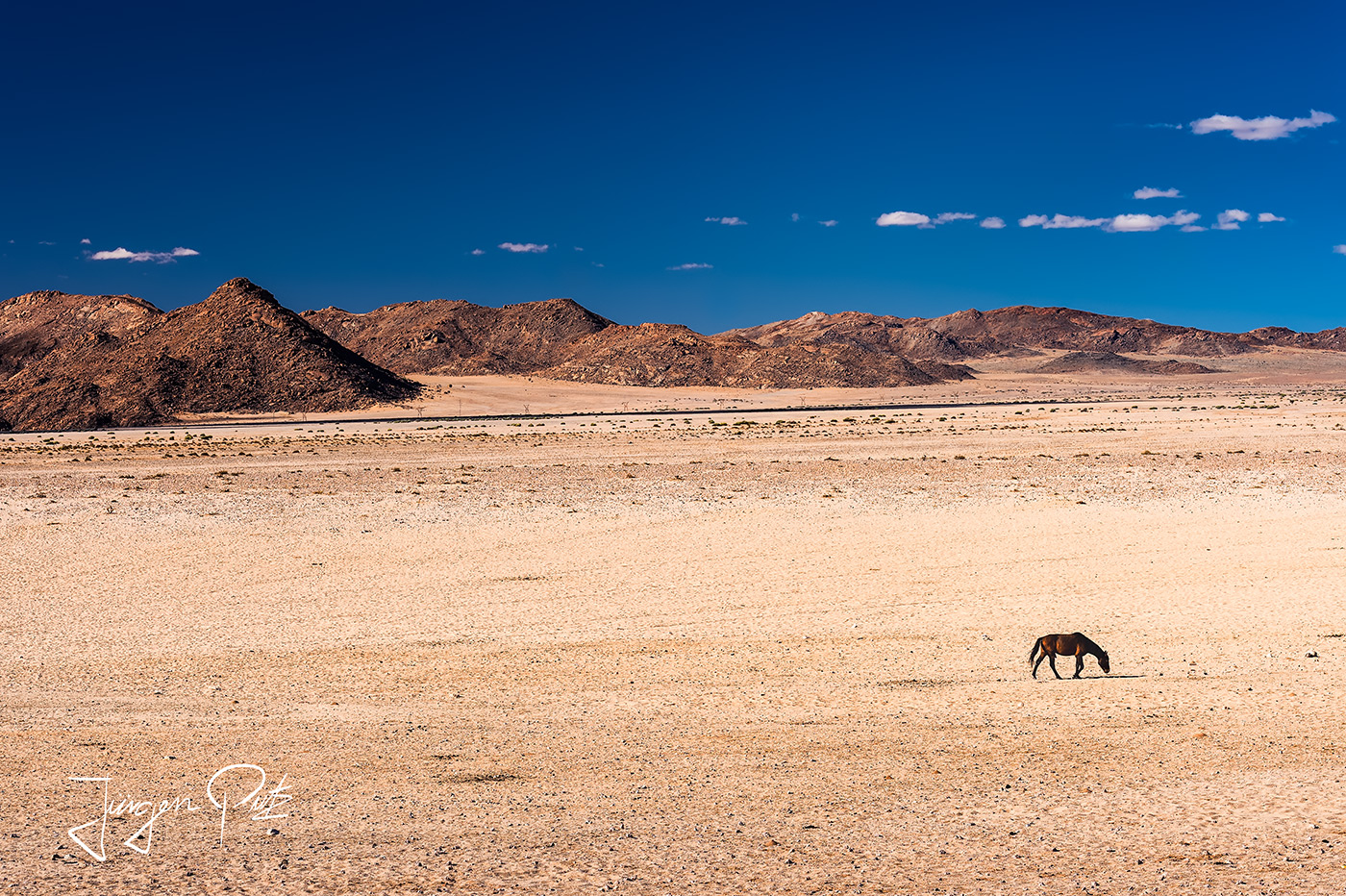
Wild horses in Africa? The jewels of North Africa, the Berbers, probably spring to mind here. This breed of horse was tamed early on by the tribes of North Africa living in the Maghreb and is still famous today for its endurance and elegance.
But in Namibia? Even if there are other explanations that may apply to one horse or another, the history of wild horses in Namibia began over 100 years ago, when the First World War broke out in Europe and shortly afterwards what was then German South West Africa also became the scene of armed conflict.
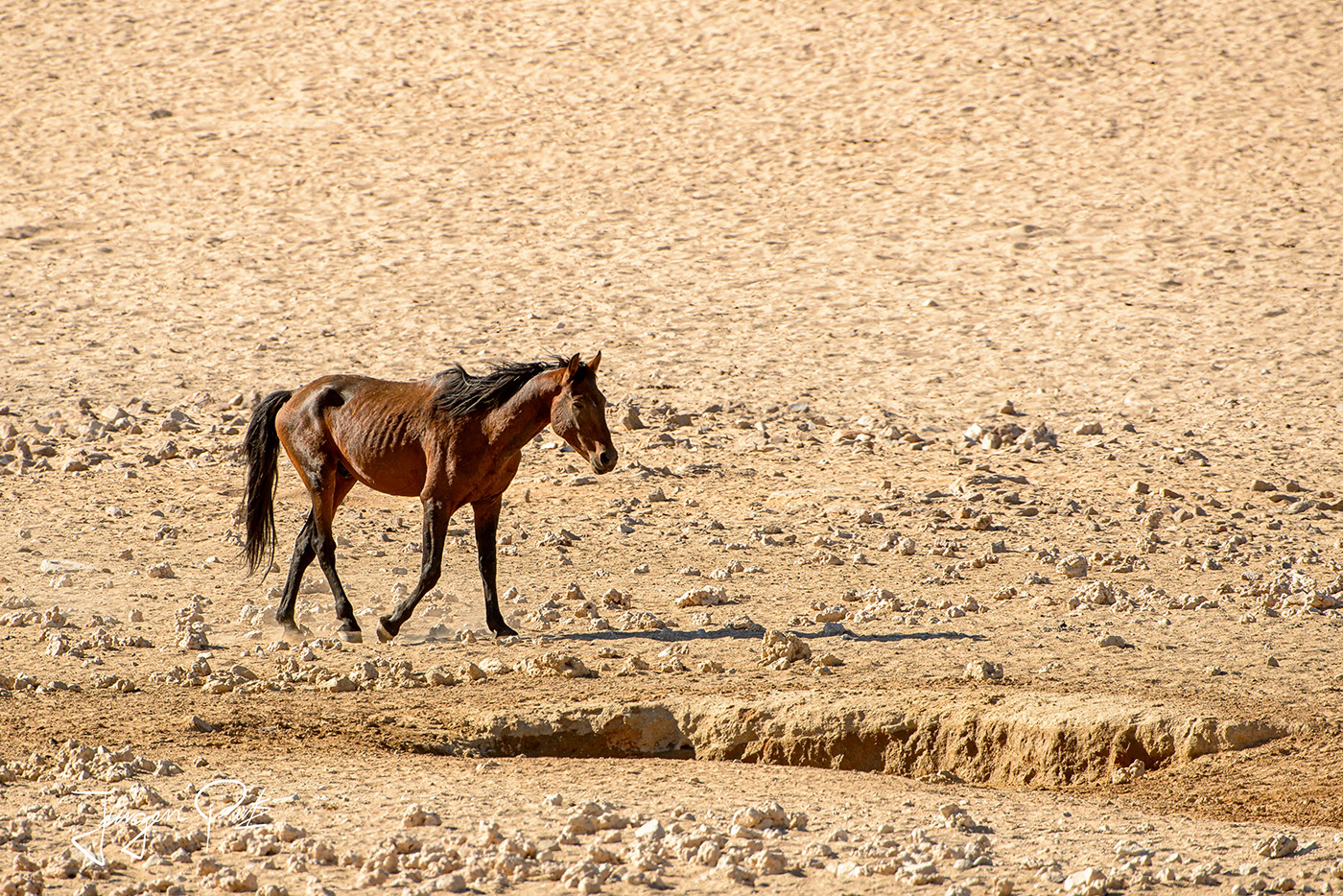
South Africa joined the war on the side of the British on September 19, 1914 and the South African General Louis Botha attacked the German Schutzgruppe with a huge superiority. In the south of Namibia, his army succeeded in February 1915 in advancing from Lüderitz along a railroad line far into the interior of the country to the Garub railroad station. There was water here and the quickly established camp offered the exhausted men and their more than 6000 horses the opportunity to rest from the exertions of the march through the desert.
But the German Schutztruppe did not remain idle. On March 23 and 27, the pilot Leutnant Fiedler took off with his Roland biplane (Roland-Taube) from his base on the nearby Schakalskuppe and bombed the South African camp. The bombs dropped triggered a wild stampede of panicked horses and although the soldiers managed to catch many of them, a large number fled into the desert.
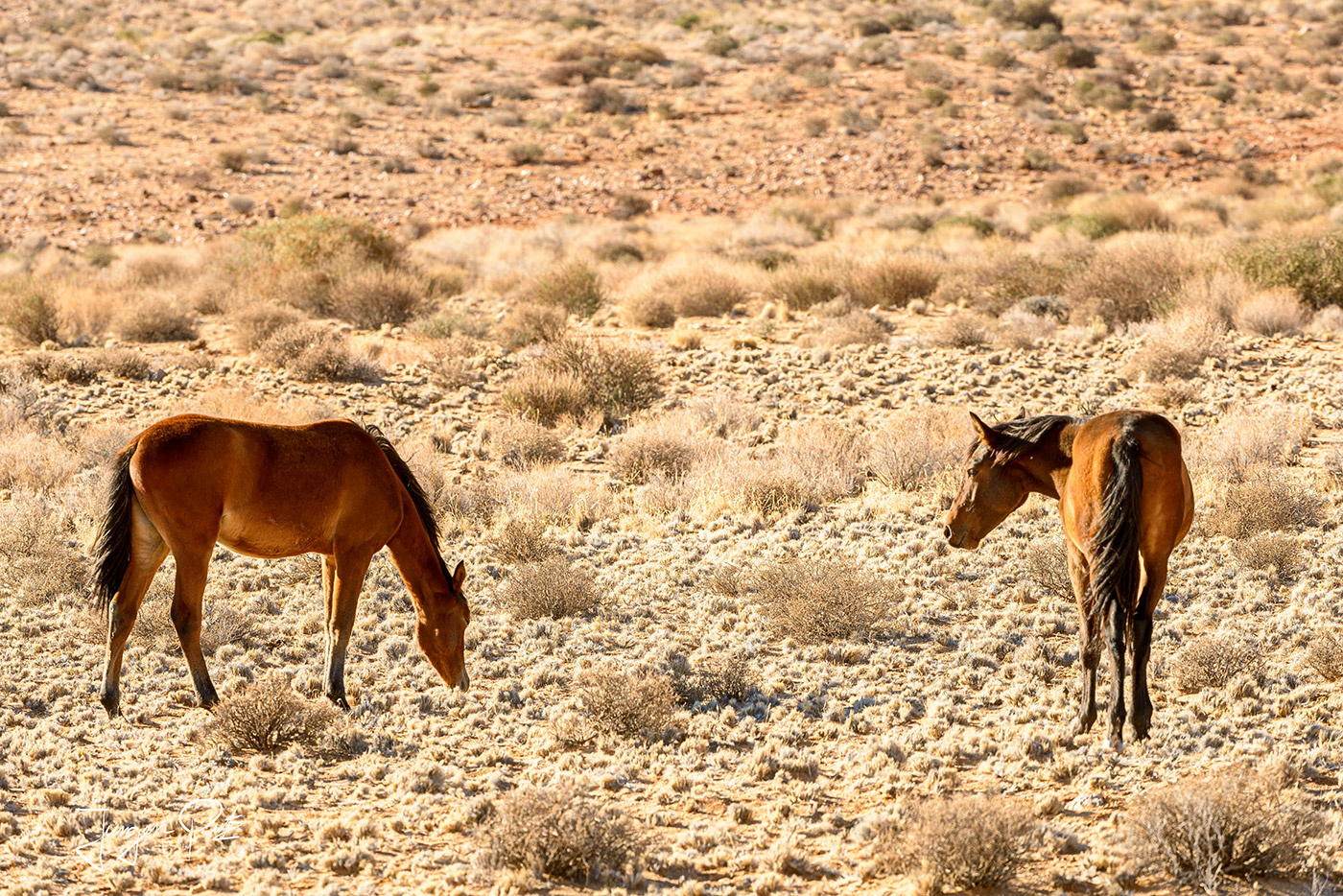
And against all expectations, the escaped animals managed to survive in this harsh and dry landscape. They fed on shrubs, succulents and the annual desert grasses found in this region. Crucial to their survival, however, was the waterhole near Garubs, which was actually used to supply the steam locomotives of the existing railroad line.
This waterhole was of course also used by other animals.
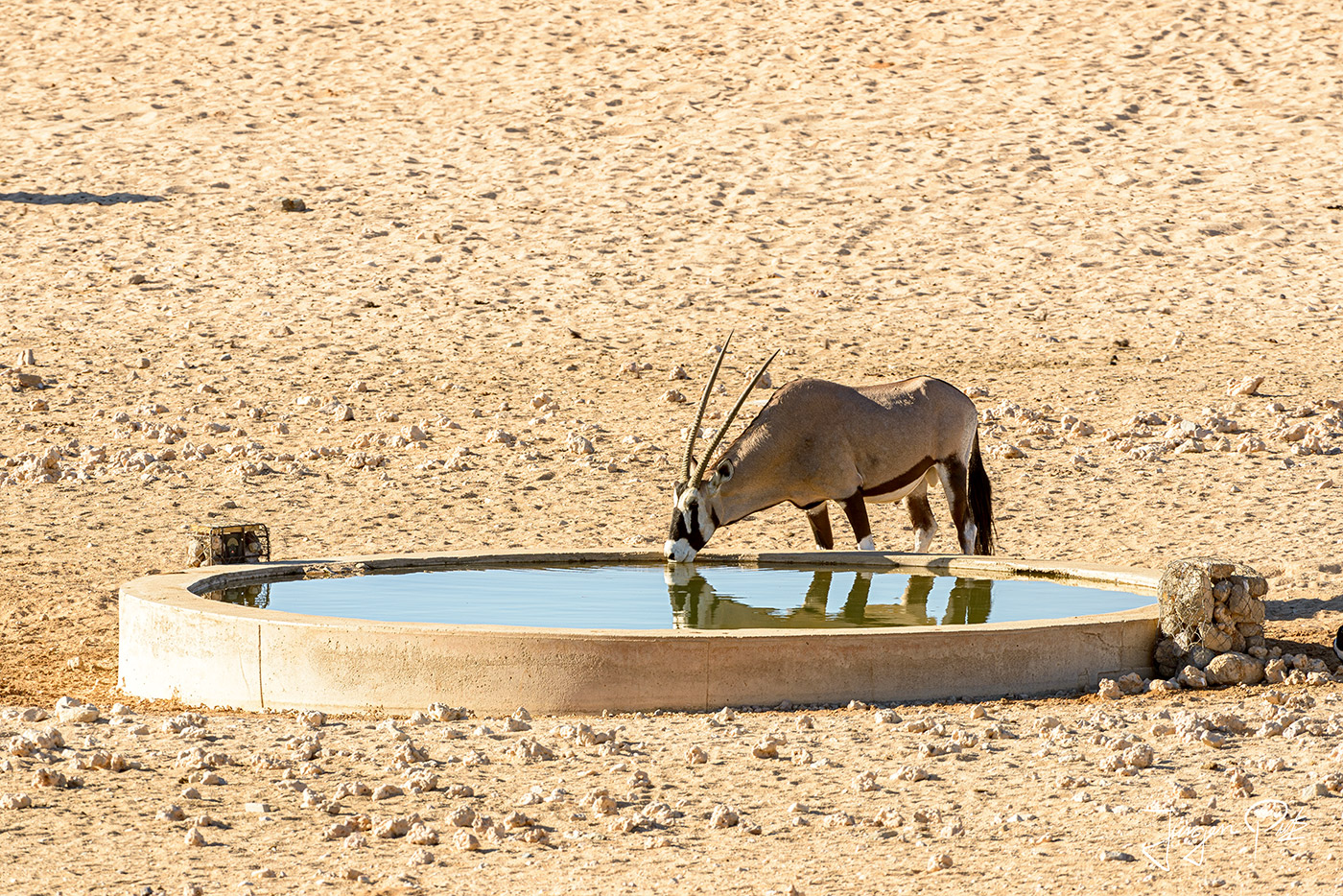
In addition, the Namibs have adapted more and more to this hostile environment over the years. Today, they are usually smaller than their conspecifics, eat their own, very nutrient-rich horse droppings and the dominance and aggressive behavior of the stallions in particular is less pronounced. They can also tolerate a certain amount of dehydration.
Nevertheless, these Namibs, the free horses of the Namib Desert, are threatened with extinction. Hyenas in particular threaten the young foals and the recurring periods of drought weaken the horses. Their numbers fluctuate; in rainy years there are often up to 280 animals at the Garub waterhole, in times of drought there are usually less than 100.
The "Namibia Wild Horses Foundation" was set up by South African zoologist Telane Greyling and Namibian Piet Swiegers to protect them. It has set itself the goal of protecting the Namibs and contributing to their survival.
It is hoped that future visitors to this region in south-western Namibia will also be able to experience these fascinating animals.
Garub desert horses
Address: on the C 34 between Aust and Garub
Website: http://www.wild-horses-namibia.com
Accommodation: Klein-Aus Vista Desert Horse Campsite
Literature: Adam Cruise, Louis Botha's War ISBN: 978-1770227521; Goldbeck, Greyling, Swilling, Wild Horses in the Namib Desert ISBN: 978-999457252

